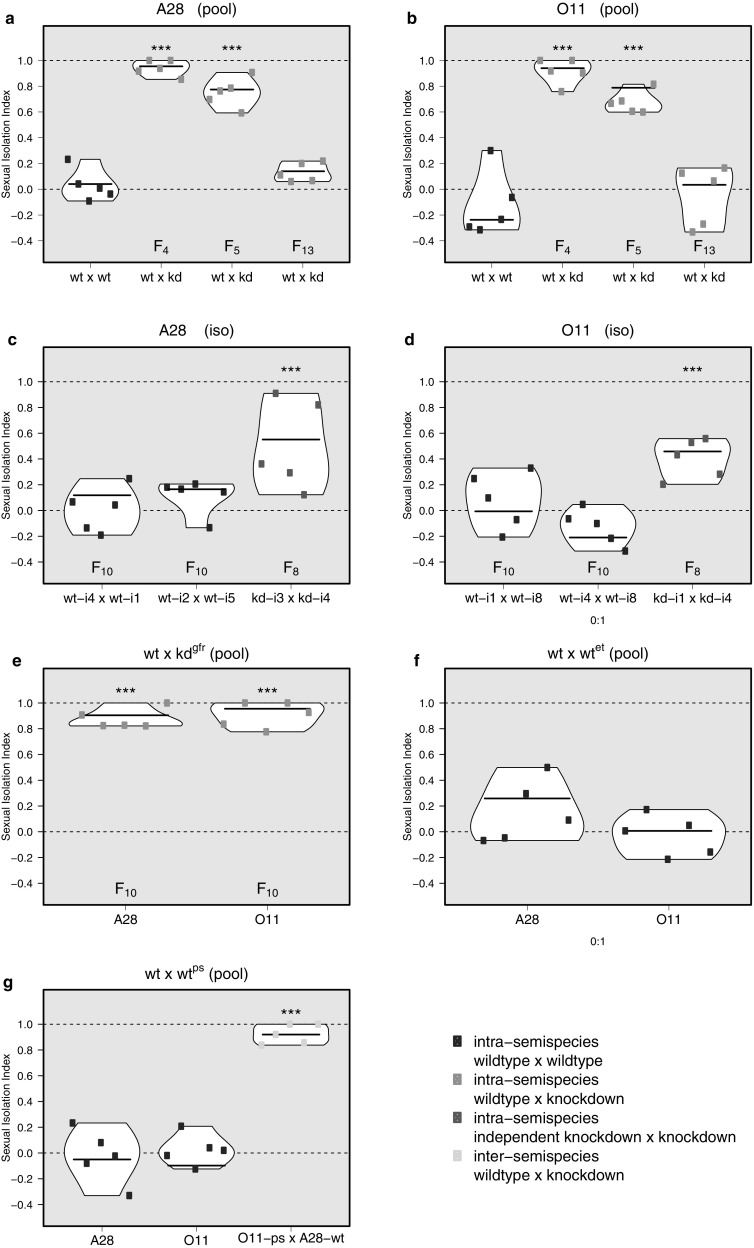Fig. 3.
Violin plots showing estimated sexual Isolation Index (eSII) in multiple choice assays between D. paulistorum wild type (wt), Wolbachia-knockdown (kd), axenic (et), and penicillin/streptomycin-treated (ps) flies. (a, b) Intra-semispecific mate choice assays with pool lines. Wild type (wt) flies (control, in purple) or knockdown (kd) flies (in orange) were assayed at generations F4, F5, F13, against wt flies, for A28 and O11. (c, d) Intra-semispecific mate choice assays with isofemale lines. wt vs. wt (purple), and kd vs. kd (pink) mating choice assays were performed between different isofemale lines, respectively at generation F10 and F8. e Intra-semispecific assays between wt and gut-flora-restored flies (gfr) performed at generation F10 for A28 and O11. f Intra-semispecific assays between wt and ethanol-washed wt flies (et) performed at generation F2 for A28 and O11. g Intra-semispecific assays between wt and penicillin/streptomycin-treated flies (ps), performed at generation F3 for the A28 and O11. The last assay (yellow) is an additional inter-semispecific assay between wt and ps flies. For all assays, the model-estimated SII was used on either individual replicates (dots), or considering the 5 replicates (horizontal bars). Asterisks denote assays for which the likelihood ratio test (LRT) is highly significant (p values < 10−4), the null model being random mating (SII = 0). All the p values are reported in Tables S2–S4. (Color figure online)

